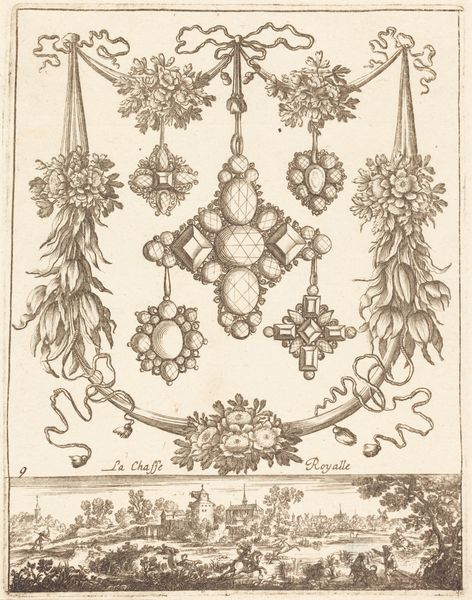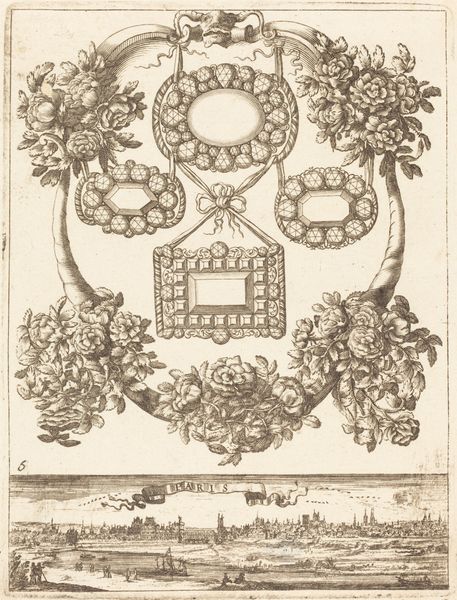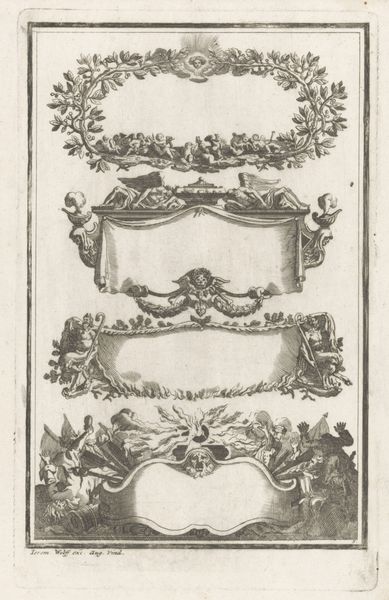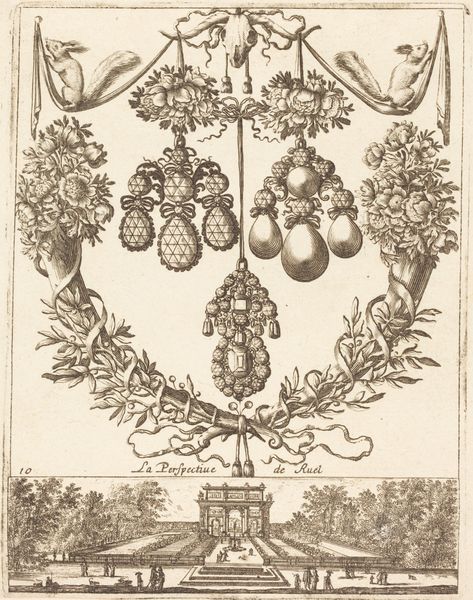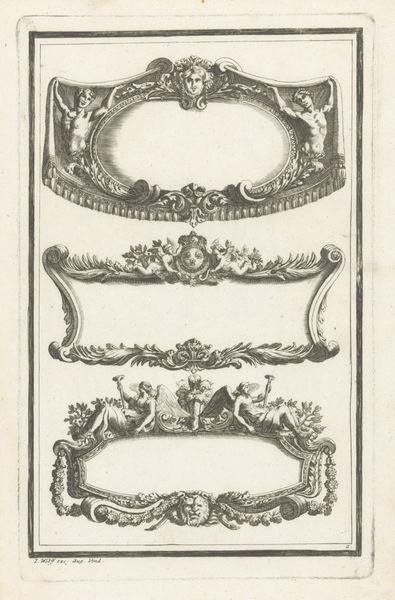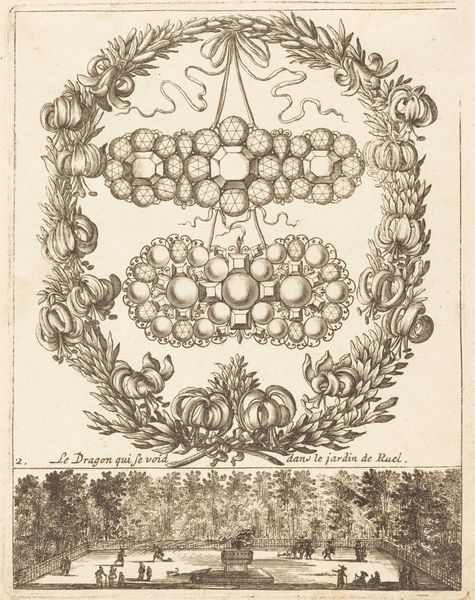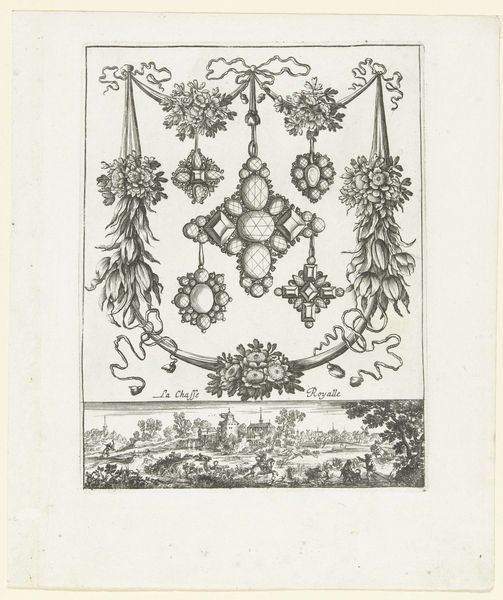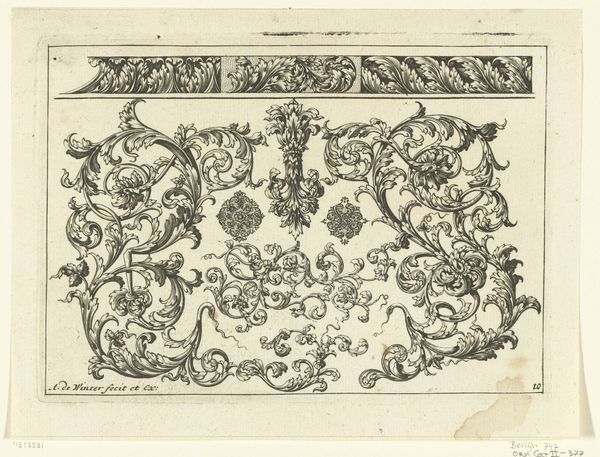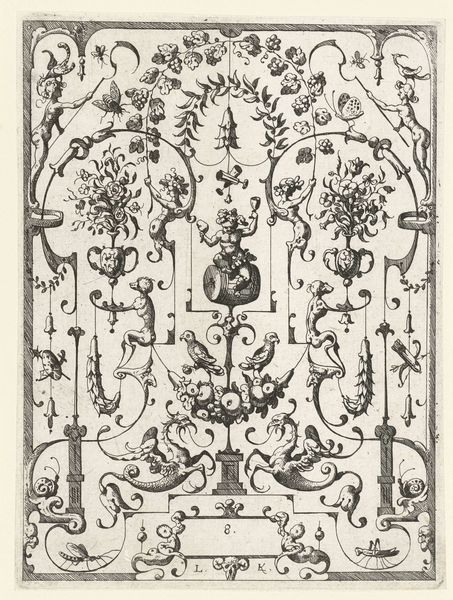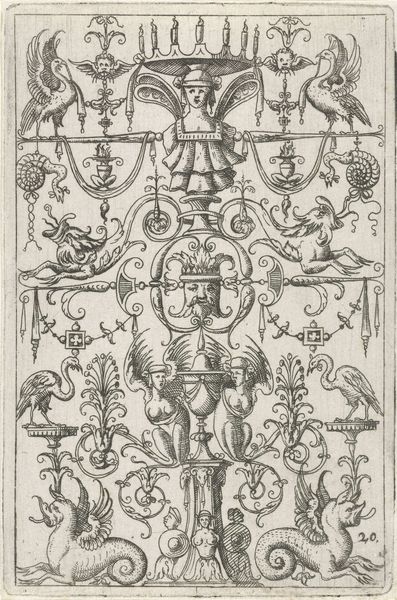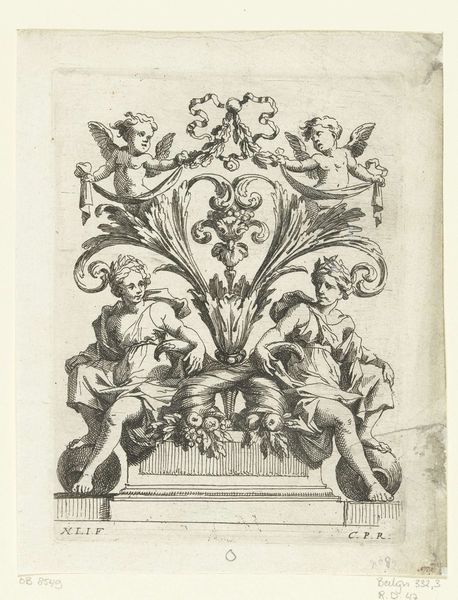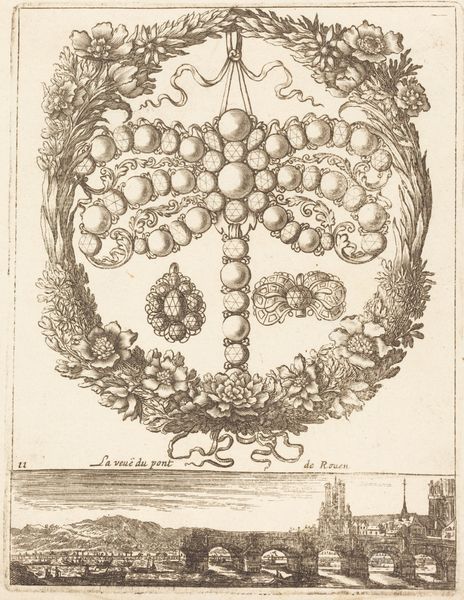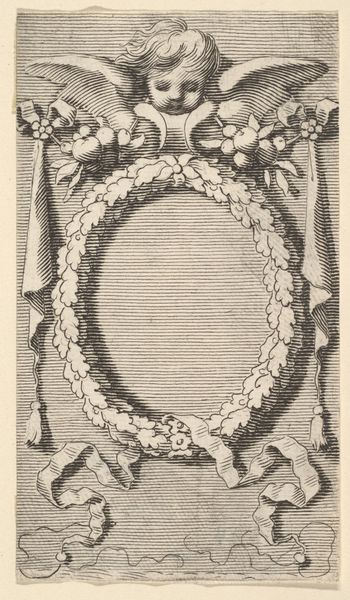
#
pen drawing
#
mechanical pen drawing
# print
#
pen illustration
#
pen sketch
#
old engraving style
#
pen-ink sketch
#
pen and pencil
#
pen work
#
coloring book page
#
intricate and detailed
Copyright: National Gallery of Art: CC0 1.0
Curator: Here we have François Le Febvre’s "Le chasteau de Ruel," a print created around 1665. Editor: It’s so delicately rendered, a study in luxury! All those gem patterns and the stately home below feel incredibly precise. Is it intended to simply impress the viewer? Curator: These jewel patterns were used for ornamental design prints for fashionable women; it is unlikely these patterns were ever manufactured as is. It's a celebration of ornamentation, but perhaps also something else. Consider the arrangement: A wreath of tulips and stylized ribbons encloses these jeweled bands, positioned directly above a carefully observed depiction of the Château de Ruel. Editor: The wreath feels almost separate from the building it encircles, doesn't it? There’s a strong contrast in textures: those jewels feel rigid and geometrically planned, while the garden below feels almost fluid by comparison, especially with those tiny human figures animating the space. What were the actual methods used to print it? Curator: The image almost certainly started out as a fine pen and ink drawing before being made into a print. It speaks to me of the human impulse to structure and give meaning, creating tangible symbols to embody our relationship with landscape and luxury. The château is presented as a locus of power, yet the ornament hints at feminine fashioning. Editor: It's fascinating to think of this print, a reproducible object, disseminating ideas about beauty and status. It certainly raises questions about the value of art, where we can discern both a vision of crafted excellence as well as its potential mass consumption as mere design. What does such accessible image making achieve socially and economically? Curator: It mirrors the values of its era but refines it and makes it widely available as an image. The print speaks to how we memorialize a particular structure—in this case, an aesthetic philosophy surrounding nobility and class structure which has resonance, I feel, even to this day. Editor: And from a single printed sheet we learn so much about aspiration, labor, status and aesthetics in seventeenth century France!
Comments
No comments
Be the first to comment and join the conversation on the ultimate creative platform.
